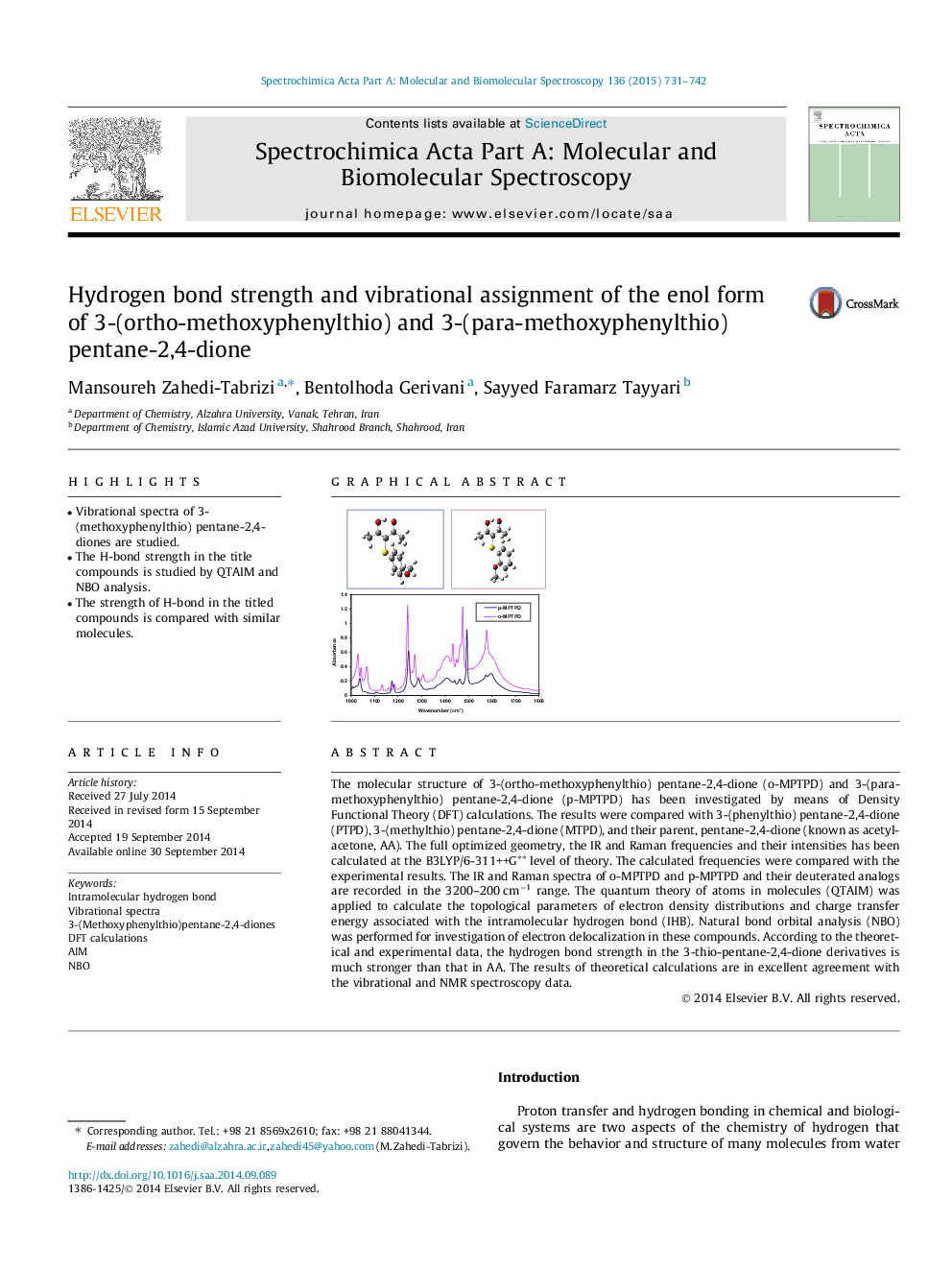| Article ID | Journal | Published Year | Pages | File Type |
|---|---|---|---|---|
| 1229489 | Spectrochimica Acta Part A: Molecular and Biomolecular Spectroscopy | 2015 | 12 Pages |
•Vibrational spectra of 3-(methoxyphenylthio) pentane-2,4-diones are studied.•The H-bond strength in the title compounds is studied by QTAIM and NBO analysis.•The strength of H-bond in the titled compounds is compared with similar molecules.
The molecular structure of 3-(ortho-methoxyphenylthio) pentane-2,4-dione (o-MPTPD) and 3-(para-methoxyphenylthio) pentane-2,4-dione (p-MPTPD) has been investigated by means of Density Functional Theory (DFT) calculations. The results were compared with 3-(phenylthio) pentane-2,4-dione (PTPD), 3-(methylthio) pentane-2,4-dione (MTPD), and their parent, pentane-2,4-dione (known as acetylacetone, AA). The full optimized geometry, the IR and Raman frequencies and their intensities has been calculated at the B3LYP/6-311++G∗∗ level of theory. The calculated frequencies were compared with the experimental results. The IR and Raman spectra of o-MPTPD and p-MPTPD and their deuterated analogs are recorded in the 3200–200 cm−1 range. The quantum theory of atoms in molecules (QTAIM) was applied to calculate the topological parameters of electron density distributions and charge transfer energy associated with the intramolecular hydrogen bond (IHB). Natural bond orbital analysis (NBO) was performed for investigation of electron delocalization in these compounds. According to the theoretical and experimental data, the hydrogen bond strength in the 3-thio-pentane-2,4-dione derivatives is much stronger than that in AA. The results of theoretical calculations are in excellent agreement with the vibrational and NMR spectroscopy data.
Graphical abstractFigure optionsDownload full-size imageDownload as PowerPoint slide
